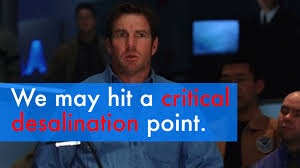We have arrived at Election Eve in America. It’s a bit tense online and in the media, but there is a palpable feeling of relief that the day is finally upon us.
That relief dissipates as rapidly as morning mist on a sunny day as the one contemplates the range of possibilities. No one has any idea how things will turn out even the most informed political analysts.
As we go to the ballot tomorrow I’ve got a William Shakespeare’s play Henry V on my mind as I rally myself to the effort. We’ve sacrificed so much to arrive at this moment as a nation.
Once more unto the breach!
The moral burden weighing on Henry seems an apt metaphor for the burden of self governance placed on Americans.
As Henry walked among his men to find out what they really thought of his leadership so too we wander social media in hopes of understanding our fellow citizens. What do they think? Will be come together?
I’ll admit much of my interest in Shakespeare comes not from any particular love of the Bard (schooling forces it upon you which can sour a child) but from my exposure the most memorable speeches reinterpreted in popular culture.
When I looked for a synopsis of the above famous line from Act 3, Scene 1 perplexityAI enjoyable suggested follow up search for Shakespeare references in Star Trek. From the Wrath of Khan to Captain Picard there are many references.
Culture is beautiful like that. The stories we tell ourselves are rewritten endlessly as we live through our own history. What might we gain or lose tomorrow? Will it be just? Will our decisions lead to wars or resolve us to peace? No one knows. And yet once more to the ballot we go.
